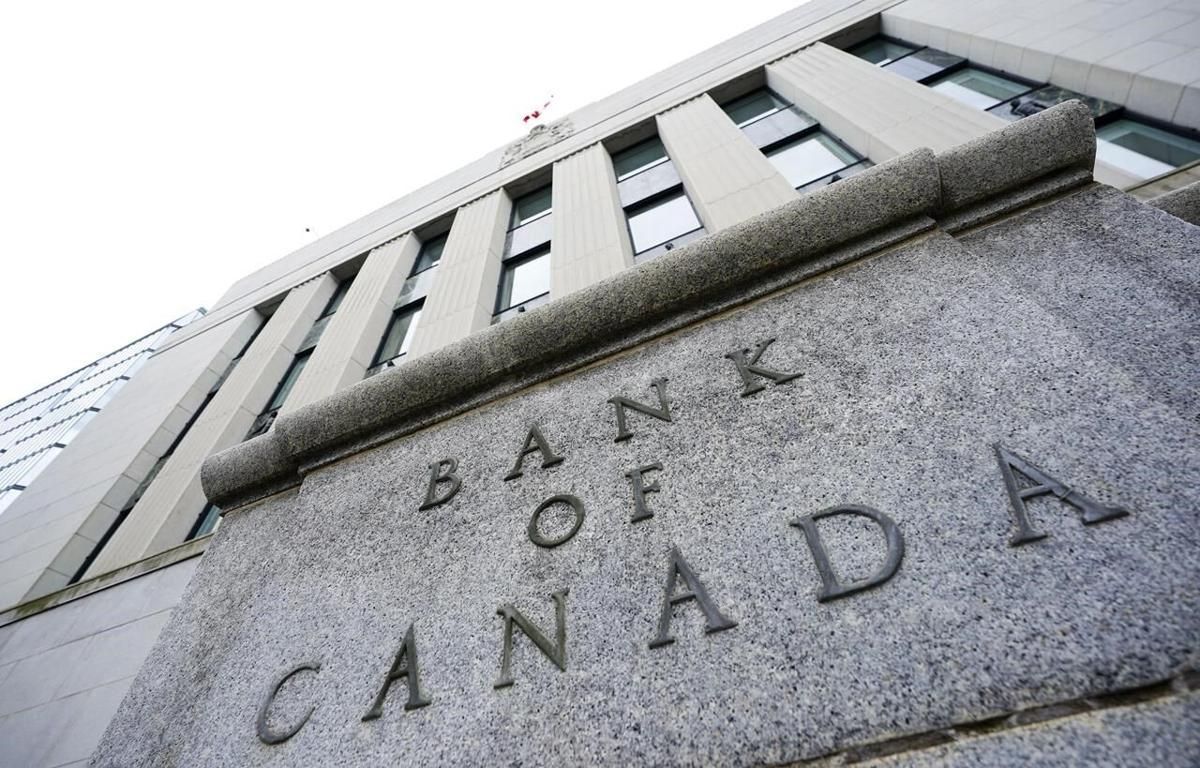Access Your Home Equity COVID-19
Nest Mortgage • May 13, 2020
As the initial shock of living through a global pandemic wears off and restrictions start to loosen, it would seem that Canada is en route to de-COVID soon (time will tell).
If you’ve been waiting until things flatten out before making any significant financial decisions, now might be a good to time start working through your options. If those options include accessing the equity from your home; for whatever reason, here are some of the things to consider moving forward.
Expect heightened scrutiny
Due to COVID-19, lenders are currently dealing with a tremendous amount of uncertainty, as many Canadians are still out of work and deferring mortgage payments, appraisal values are in question, and sales in the housing market have slowed down considerably. And for most lenders, the best way to deal with uncertainty is by being cautious.
Moving forward, you can expect heightened scrutiny on any mortgage transaction. Qualification standards are no longer hard and fast rules, but rather guidelines. So although you may qualify to access up to 80% of your property’s value based on the government regulations, depending on the lender, they might only be comfortable lending to 75% or less.
Part of this heightened scrutiny will also include a more in-depth assessment of your employment. Lenders want to see evidence of stable income to ensure you have the means to make your new mortgage payments.
So if you’ve experienced any type of job loss or reduced hours, if you have deferred your mortgage payments, or if you’ve accessed any government relief programs, qualifying to refinance your mortgage won’t be a walk in the park.
55+? Consider a reverse mortgage
For those Canadians 55+ who have significant home equity, a reverse mortgage is worth serious consideration. Qualifying for a reverse mortgage is way less complicated compared to traditional mortgage financing as there are no income or credit requirements. Any money borrowed is tax-free and does not impact CPP or OAS qualifications.
Instead of making regular payments to reduce the total balance outstanding, the interest is added to the total mortgage amount and increases each year.
Accessing home equity, without having to make regular payments, has proven to be the ultimate in cash flow management and a useful tool in helping older Canadians live their desired lifestyle.
You need a plan
Despite the uncertainty, mortgage lenders are still in the business of lending money. It is still possible to refinance your mortgage and access your home equity, but if a lender assesses you’re using your home as a personal ATM, it’s probably not going to work out.
So, the best plan of action is to have a plan of action. That starts with working with an independent mortgage professional who understands the lending landscape and can provide you with mortgage options at many different lenders.
If you have any questions, please don’t hesitate to contact me anytime, together we can look at all your options and figure out a plan going forward.

Who Knew? 🔮 As expected, or easily predicted, the Bank of Canada formally announced a 0.50% cut to the overnight rate earlier this morning. (click for official announcement) This adjusts Prime Rate down to 5.95%, the lowest level we’ve seen in the past two years, and demonstrates a clear signal that the BoC is doing everything possible to kick-start economic growth. A Green Light to Borrow Governor Tiff Macklem’s message is straightforward: borrowing just got cheaper, and more cuts could be coming. With inflation settling back around the 2% target, he’s effectively giving Canadians the go-ahead to take advantage of lower rates, even if average core inflation is still a touch above the goal. "We want to see growth strengthen," Macklem said, and he’s determined to make it happen.

As anticipated, this week's Bank of Canada announcement kept the overnight rate unchanged. The Bank expects inflation to hover around 3% and drop below 2.50% later this year, aiming to reach the target of 2% by 2025. Wednesday marked the sixth consecutive "no change" announcement, although speculation persists that we should see rates, specifically Prime, drop by .75-1.00% by the end of 2024. Despite no movement being widely anticipated, it is disappointing that further insight into a housing market reset has now been postponed until the next scheduled decision on June 5th. With unemployment at a 26-month high and GDP underperforming, these are two indicators contradicting the notion of rates remaining "higher for longer".

In light of theIn the wake of today's Bank of Canada (BoC) announcement maintaining the overnight rate at 5.00%, Nest brings you a comprehensive overview of the current mortgage landscape. Prime Rates and payments for variable lending products remain unchanged following this non-rate event, leaving borrowers in a familiar position. While the BoC provided limited insight into the potential timing of interest rate cuts, consensus suggests we might witness the first rate cut materializing in June of this year. Despite the ongoing commitment to restoring price stability for Canadians, a message consistent since July 2023, it is essential to highlight key facets of today's mortgage landscape: 1. GDP: Canada's 4th Quarter (2023) GDP surprised with a 1% annualized growth rate, surpassing expectations. However, beneath the positive headline lies a complex narrative. The growth coincided with a population surge of approximately 430,635 people, equating to a 4% annualized growth rate. On a per capita basis, Canadians appear to be experiencing the intended tightening, a trend persisting in 5 of the last 6 quarters. Per capita GDP adjusted for inflation is now lower than Q4 2014, a noteworthy observation challenging the notion of an economy in need of restraint. 2. Labour: In January, Canada's Labor Force added 37,000 jobs, outperforming expectations, leading to a decline in the unemployment rate to 5.7%. However, a closer examination reveals some finer details. Despite adult population growth of 125,500 people, the labor force expanded by a much smaller 18,200. Additionally, the participation rate for the age group of 15-24 witnessed a concerning decline of 130,000 persons. Without this decline, the unemployment rate would be 0.5% higher. 3. Inflation: Canada's Headline Inflation Number registered below expectations at 2.9%. In the ongoing battle against inflation, there has been significant progress since CPI peaked at 8.1% in June 2022, now comfortably below the 3% threshold. Core measures, though still elevated at 3.4% and 3.3% respectively, are expected to ease further as higher rates prompt more mortgage holders to renew into lower interest rate mortgages. 4. Global Considerations: Economic performance and Bond yields have been influenced by global factors. While global economic growth slowed in the fourth quarter of 2023, U.S. GDP growth remained surprisingly robust and broad-based. Inflation in the U.S. and the Euro area continued to ease, accompanied by a notable rise in equity markets. What's Next? The looming question pertains to the BoC's eventual decision to ease interest rates. The per capita statistics and the intricate state of the Canadian economy are interwoven in unpredictable ways, with the wildcard being the surge in population growth. Inflation, triggered by demand exceeding supply, faces uncertainties on how pent-up demand will respond to rate cuts. The surge in Canada's population, almost double the pre-COVID growth, plays a crucial role in shaping the trajectory of the BoC's decisions. Since October 2023, significant drops in fixed mortgage rates have been observed, likely to persist gradually as markets anticipate rate cuts by the BoC. Current odds indicate at least one rate cut by this summer, and two more to follow before year-end ( market survey ). As we approach the Spring Market, optimism and demand gain momentum. If you've adopted a 'wait and see' approach, now is the opportune moment for a conversation. Preparing before the first rate cut is pivotal, as optimism will inevitably transition to confidence, and housing market activity will return to normal levels. Next BoC Announcement: April 10, 2024.

In light of the softening of the Canadian economy, the Bank of Canada opted to maintain its overnight rate for the fifth consecutive time earlier this month leaving Prime and variable product pricing unchanged. While "financial conditions have eased," the Bank also highlighted persistent inflationary pressures stemming from ongoing wage growth and robust immigration. This is exacerbated by the housing supply failing to keep pace. The Bank continues to emphasize the need for restrictive policy to bring inflation back within target, yet “the market” is no longer buying it! With subdued core inflation pressures, declining GDP and house prices, and a softening labour market, it is inevitable that the Bank will need to reduce rates to avoid severe economic consequences. Market consensus is the rate-tightening cycle has passed and both new and existing mortgage holders can look to much needed rate reprieve in 2024. Bond yields have dipped more than -100bpts since October, leading to lower fixed rates. Conventional 5-year fixed rates are offered at 5.69-5.99%, with a noteworthy offer of 4.99% for default-insured purchases. As fixed rates have only dropped -50bpts over the same period, expect further discounting in the weeks ahead. THE (MORGAGE) YEAR THAT WAS, AND WHAT LIES AHEAD?

Governor Tiff Macklem and the Bank of Canada (BoC) made the expected decision this week: no change to the Overnight Rate [no change to Prime] . While the Bank has surprised markets in the past, this week’s hold was widely anticipated. What makes this instance unique is the growing body of evidence showing that higher interest rates are leaving their mark on the economy... Unprecedented Data Points: Second quarter GDP figures fell significantly below expectations, contracting by 0.2% compared to anticipated growth of 1.2% to 1.5%. Despite substantial population growth, the economy should be thriving, but it's not. Time Lag of Rate Impact: Generally, interest rates take over 12 months to exert their full influence. In the last year, we've seen a total increase of 1.25% in Q2 2022 and another 1.75% in rate hikes in Q3 2022. The July 2023 GDP numbers are showing the impact of these hikes, with sluggish growth. Consumption and Employment Challenges: Total retail sales have plateaued, especially when adjusted per capita, reflecting the weight of higher interest rates on consumer spending. The unemployment rate has climbed by 0.5% in the last three months, further complicating the economic picture. What does this mean for mortgages and rates? Inflation is likely to persist at elevated levels for some time, but it won't prompt the BoC to act unless accompanied by a rebound in GDP growth and spending. As disappointing economic data advances expectations of rate cuts, we may experience downward pressure on fixed interest rates sooner than previously forcasted. Experts are nearing a consensus that the BoC has reached its ceiling on rate tightening, with inflation as the last obstacle before easing. In these uncertain times, we are here to assist. Whether you're considering home buying or refinancing for improved cash flow, we can provide the answers tailored to your needs. Please don't hesitate to reach out to discuss your mortgage needs!





